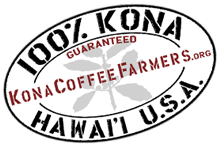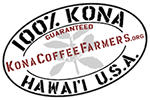The “Kona Blend” Issue
The KCFA is NOT against blending. Blending is a roaster’s art to produce just the flavor his customer wants. What the KCFA DOES object to is LABELING of a 90% foreign coffee in a bag as a “Kona blend”. It is inherently deceptive to use the “Kona” name for 90% foreign-grown coffee. It is a…


